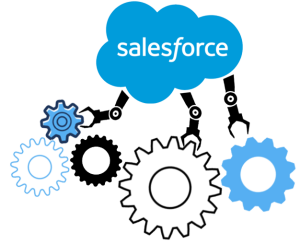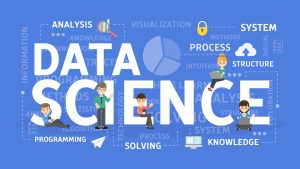Overcoming Challenges: Change Management in Azure Migration Projects

In today’s rapidly evolving technological landscape, businesses are compelled to migrate their operations to cloud environments like Microsoft Azure to stay competitive and agile. However, the process of transitioning from traditional on-premises systems to cloud-based platforms is not without its challenges. One of the most critical aspects of a successful Azure migration program is change management. This process involves effectively guiding the organization and its workforce through the transformation while mitigating resistance and optimizing the adoption of managed Azure services. In this article, we delve into the strategies and tactics that can be employed to facilitate seamless change management throughout an Azure migration project.
Understanding the Azure Migration Landscape
Before delving into change management strategies, it’s crucial to grasp the dynamics of Azure migration projects. The migration to Azure entails transferring on-premises applications, data, and infrastructure to the cloud while adopting managed Azure services. The benefits of this transition are undeniable, including enhanced scalability, reduced operational costs, and improved flexibility. However, such endeavors necessitate a well-structured approach to ensure that technical, operational, and cultural shifts are effectively managed.
Key Challenges in Azure Migration Change Management
Technical Complexity: Azure migrations involve intricate technical processes, including data migration, networking configuration, and application replatforming. Ensuring a smooth transition while minimizing disruptions requires meticulous planning and coordination.
Operational Disruption: Any change, especially one as substantial as migrating to Azure, can cause operational disruptions if not managed properly. Ensuring minimal downtime and maintaining essential business functions are paramount during the migration process.
Cultural Resistance: Employees may exhibit resistance to change due to unfamiliarity with the new environment or fears of job displacement. Addressing these concerns and fostering a positive attitude towards the migration is crucial.
Data Security and Compliance: As data moves from on-premises to the cloud, data security and compliance become paramount. Managing data integrity and ensuring compliance with industry regulations adds another layer of complexity.
Strategies for Effective Change Management
Comprehensive Communication:
Open and transparent communication is the cornerstone of successful change management. Create a clear and compelling narrative outlining the benefits of Azure migration and managed services. Address concerns about job security by emphasizing how the transition will create new opportunities and roles within the organization.
Engage Stakeholders Early:
Involve key stakeholders, including IT teams, department heads, and end-users, early in the planning process. Their input can offer valuable insights, and their buy-in will contribute to a smoother migration.
Education and Training:
Organize training sessions to familiarize employees with Azure tools and concepts. This reduces the learning curve and enhances confidence in using the new environment. A phased approach to training, tailored to different user groups, can be particularly effective.
Pilot Programs:
Implement pilot programs to test the migration process on a smaller scale. Use pilot outcomes to refine the migration plan, address unforeseen challenges, and gather real-world feedback.
Change Champions:
Identify and enlist change champions within the organization. These individuals, typically enthusiastic about the migration, can act as advocates, provide peer support, and share success stories.
Mitigate Data Concerns:
Address data security and compliance concerns head-on. Highlight Azure’s robust security features and compliance certifications. Emphasize the organization’s commitment to safeguarding sensitive information.
Customize the Transition:
Recognize that different departments might have unique requirements and challenges. Tailor migration plans to address these variations, ensuring a more personalized and less disruptive experience.
Feedback Mechanisms:
Establish feedback channels for employees to express concerns and share insights. Regularly assess feedback and make adjustments as needed to enhance the migration experience.
Celebrate Milestones:
Celebrate achievements and milestones throughout the migration journey. Publicly recognize teams and individuals who contribute to the successful migration, fostering a sense of accomplishment and pride.
Continuous Monitoring and Optimization:
The process of change management doesn’t end once the migration is complete. Continuous monitoring and optimization are essential to ensure that the newly adopted Azure environment and managed services are performing as intended and delivering the expected benefits. This involves closely tracking key performance indicators (KPIs), analyzing user feedback, and identifying any areas where improvements can be made.
Regularly assess the performance of applications and workloads in the Azure environment, comparing them to the pre-migration benchmarks. This data-driven approach helps in identifying any bottlenecks, performance issues, or underutilized resources. By proactively addressing these concerns, you can optimize the Azure environment for efficiency and cost-effectiveness.
Post-Migration Support and Learning Resources:
Change management doesn’t stop once the migration is complete. Providing ongoing support and learning resources for employees in the new Azure environment is essential for maintaining productivity and confidence.
Create a dedicated support system that offers assistance to employees who encounter challenges or have questions while using managed Azure services. This support can be in the form of a help desk, an online portal, or designated individuals within each department who are well-versed in the Azure environment. Swift and effective problem resolution will prevent frustration and ensure that the transition remains as smooth as possible.
Conclusion
Change is a constant in the world of technology, and Azure migration projects epitomize this reality. Navigating the intricacies of such transitions requires a comprehensive change management strategy that addresses technical, operational, and human factors. By fostering a culture of open communication, early stakeholder engagement, tailored education, and continuous feedback, organizations can successfully steer their Azure migration programs. As managed Azure services become an integral part of business operations, mastering change management will be the linchpin in ensuring a seamless and impactful migration experience.




